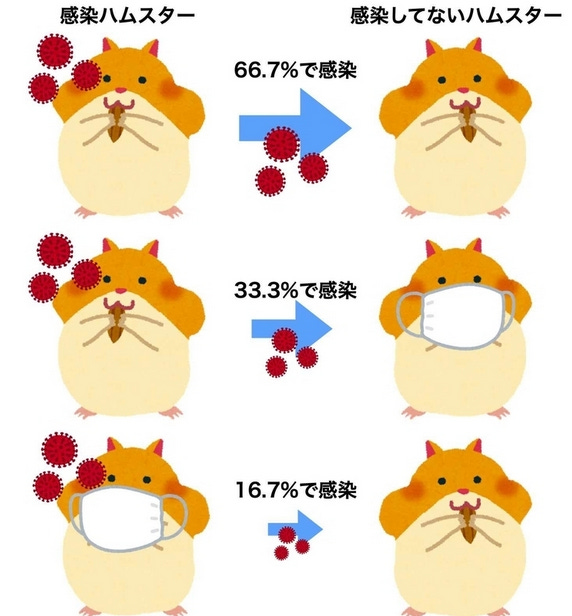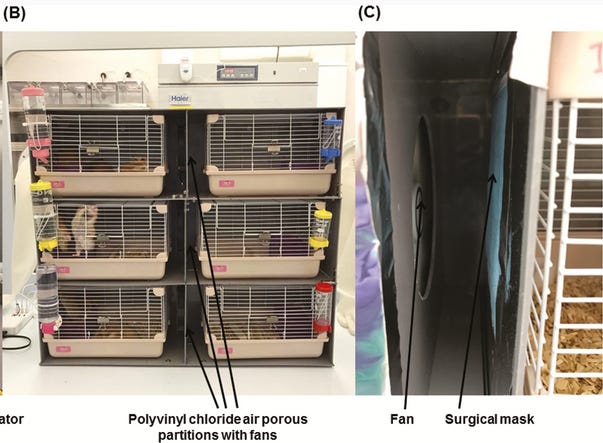Many western Covidians/pharma hucksters like Eric Topol believe that the Japanese masked up early in the Covid-19 Pandemic because they “listened to the experts”. So what exactly were Japan’s experts saying in early 2020 about masks? Let’s start with Kobe University infectious disease specialist Prof Kentaro Iwata speaking in Feb 2020.
To be exact, Prof Iwata said masks were pointless for people without symptoms but recommended that symptomatic people wear masks.
Next is Prof Satoshi Kutsuna from Osaka University.
Again, like Prof Iwata, Prof Kutsuna was speaking about masks for asymptomatic people. He similarly recommended masks for symptomatic people.
What about professional organisations like the Tokyo Medical Association? The below advice was put up on the TMA’s webpage in Feb 2020 and later deleted. Point 2 near the top says "People coughing and sneezing should wear masks with the aim to prevent infecting others. (The effectiveness of masks for people without symptoms isn’t said to be high.)”
If we go further back in time to December 2019, we can find Osaka University immunologist Prof Masayuki Miyasaka being very clear.
Up until around late March 2020, the experts’ advice was widely followed.
This shouldn’t surprise anyone who knows anything about pre-Covid Japan. Masks were worn by sick people, not healthy ones.
And healthy kids almost never wore masks. The idea of universal masking of healthy children would have seemed ridiculous in Japan in 2019. In Feb/March 2020, Japanese media were still willing to publish articles like this warning that kids could increase their infection risk by wearing masks because they were likely to use masks incorrectly (e.g., touching them with contaminated hands).
Higher infection risk from mask wearing isn’t limited to misuse by children either. In April 2020, Japanese media was still honest enough to run articles warning adults that sticking any old dirty rag over your face could increase your risk of infection.
However, all the experts mentioned above soon became wholehearted mask advocates. So what changed their minds? In addition to his regular TV appearances, Prof Kutsuna has been writing a weekly column for Yahoo! News during the pandemic, so hopefully he can tell us.
Well, the article is from July 2020, so the evidence is no longer recent, but let’s take a look at it. The image from the article shows transmission rates among…hamsters.
In case you’re thinking, “Hamsters!? Is this a joke?”, here’s the original peer-reviewed study.
And here’s the setup.
As evidence goes, I’m not sure that study is too convincing. So is there anything else that could have possibly changed Prof Kutsuna’s mind? While you’re thinking of an answer, here’s a Pfizer advert he appeared in last year about the importance of correctly knowing about vaccines.



So what’s Prof Kutsuna’s position on masks at the moment?
So if you get the jab, you may get to take off your mask. Now where have I heard that before?
The, er, flexibility of the views of Prof Kutsuna and the rest is probably one reason expert opinion is at the bottom of the Pyramid of Evidence. But at least it’s part of the pyramid, unlike hamster studies.
And on the off chance that anybody wants to read my regularly updated deep-dive into the scientific evidence higher up the pyramid for mask effectiveness, here it is.




![怠惰に暮らしたいトド on Twitter: "医療用マスク[医]と布マスク[布] 報告や研究では 病人:[医]も[布]も、飛沫を止めて感染拡大を抑止する一定の効果がある 健康な人:[医]も[布]も、自分へのウイルス感染を防ぐエビデンスはない ※マスク についてこの点を述べた岩田先生 ... 怠惰に暮らしたいトド on Twitter: "医療用マスク[医]と布マスク[布] 報告や研究では 病人:[医]も[布]も、飛沫を止めて感染拡大を抑止する一定の効果がある 健康な人:[医]も[布]も、自分へのウイルス感染を防ぐエビデンスはない ※マスク についてこの点を述べた岩田先生 ...](https://substackcdn.com/image/fetch/$s_!ekVM!,w_1456,c_limit,f_auto,q_auto:good,fl_progressive:steep/https%3A%2F%2Fbucketeer-e05bbc84-baa3-437e-9518-adb32be77984.s3.amazonaws.com%2Fpublic%2Fimages%2Fb410b2c7-abac-4038-8777-2fb513c4b42d_1200x675.jpeg)













Masks being worn by sick people can NOT stop them from spreading covid, nor any other airborne disease. The mask is to droplets containing viruses, bacteria and fungus what screens are to water balloons. They break the large droplets into millions of little bitty, micro mini droplets, known as aerosols. Covid has been known for 2 years to spread via aerosols and NOT by droplets. Thus, in the case of covid, masking the those sick with it is in fact INCREASING the ability of the sick to spread it.
Masking those sick with any infectious respiratory disease does them no favors either. The mask does not, can not stop enough virus to prevent spread and MAY catch enough bacteria to keep it from spreading (This is doubtful even if the bacteria are big enough to get caught by a mask’s fibers as most of the exhaled breath flows around the mask and not through it.) but it does stop some. Some of what the body successfully rids itself of and expels vis expiration will be caught in the mask and breathed in AGAIN raises the sick’s viral/bacterial/fungal load further than it would be if they were not forced to rebreathe what they expelled.
The term “mad as a hatter” came from, as I have read, the mercury used in producing the still wool felt hats worn in the past. This would leech into the the body or the wearer or maker over long years of use and cause mental issues for the long term wearer. Similar seems to be true of the maskers. Long use with the attendant blood flow restraints of the straps and reduced O2 from reduced air intake over a period of many months has caused brain damage. Time to retire the long since obsolete term of “mad as a hatter” for a more current and appropriate term; “mad as a MASKER”.
Well, they are experts. That's why I have been following their advice for the past two years. No mask for me. Mask? I meant face diaper. Sometimes on other sites I have to be careful how I phrase things. Hope I don't turn into a NPC. Face diaper! Face diaper! Face diaper! Follow the experts. No face diaper! Got it.